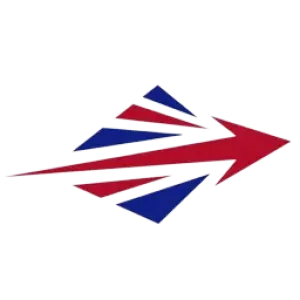The present continuous tense, sometimes called the present progressive tense, is used for speaking about things that are happening now and still in progress. The action started in the past, continues to the present and will probably continue into the near future. Since this tense is closely tied to what happens around now, it is often used to describe temporary or unfinished actions. The present continuous is formed by using the verb “to be” in the present tense and the main verb ending in “-ing.” This form of the verb is also called the present participle.
For example:
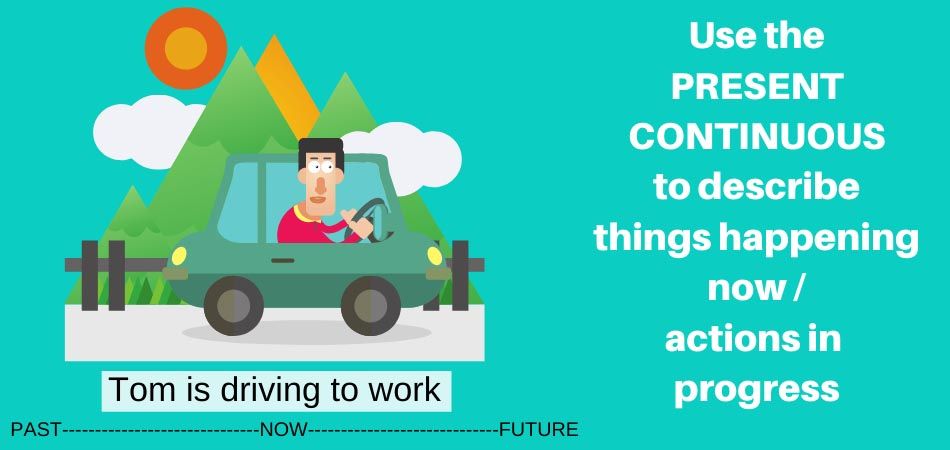
[Tom] + [is] + [driving] to work.
[SUBJECT] + [PRESENT FORM OF “TO BE”] + [VERB ”-ing” FORM]
The above example shows that Tom is currently driving now, at the time of speaking. It also shows that the action is in progress / is not finished yet (he is still traveling to work and hasn’t arrived yet). Below we can see a timeline of this action, starting a little in the past, progressing to now and continuing a little into the future:
PAST NOW FUTURE
————-[TOM IS DRIVING]————->
The verb “to be” and the present continuous
As the present continuous is formed using the present tense of the verb “to be” plus the main verb, below is a reminder of how the verb “to be” changes or conjugates in the present according to the subject. Remember that, especially in spoken English, the “to be” verb forms are often abbreviated. Using the abbreviated forms usually sounds more natural/casual when speaking with friends, family and others you know well.
For example:
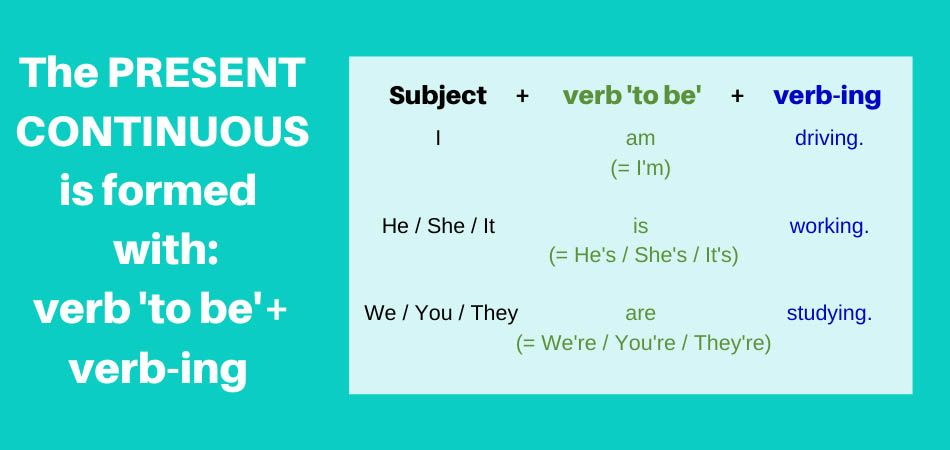
Negatives and questions in the present continuous
To make negative sentences we only need to change the verb “to be” by adding “not,” while the main verb remains the same in the present participle “-ing” form. Remember that you can use the negative abbreviated forms “ I’m not,” “ He / She / It isn’t,” and “We / You / They aren’t” as well. For questions, remember to change the word order, switching the positions of the subject and the “to be” verb.
For example:
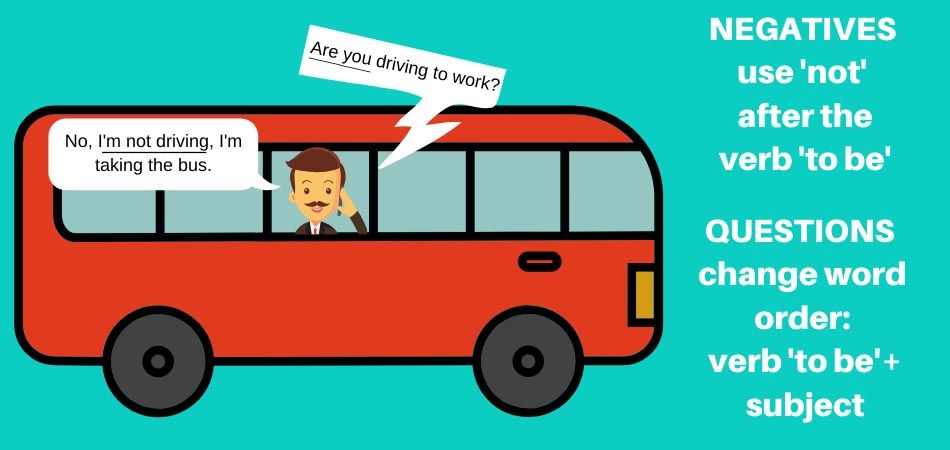
In the conversation above, the caller asks “Are you driving to work now?” The verb “are” and the subject “you” swap places from the original “you are” when we ask questions. The man answers: “No, I’m not driving, I’m taking the bus,” describing the actions he is currently in the middle of doing (or not doing.)
Unfinished actions outside the time of speaking
We already mentioned that using the present continuous usually describes something happening around now and that the action is still not complete. The idea of “around now” can include things that are currently in progress even if the speaker isn’t doing the action right at the moment they speak about it.
For example:
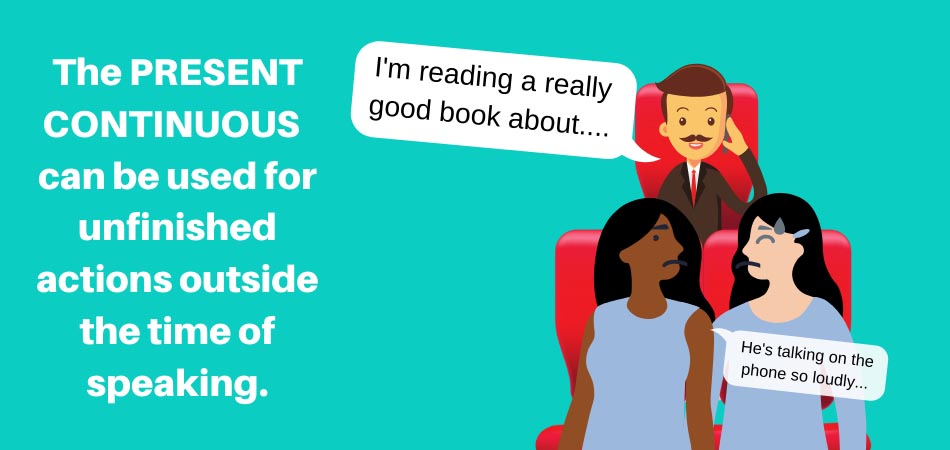
“He’s talking on the phone…” [action is in progress, happening exactly at the time of speaking]
“I’m reading a really good book about…” [action is in progress in general, NOT happening at the time of speaking]
The example shows that the man is currently on the phone. He is not reading the book right now, but he has started reading the book in the past and has not finished it yet. He is in the middle of reading it, he hasn’t finished reading the book.
Present continuous and time phrases
This tense is often used together with time phrases that indicate periods around now. Using these time phrases helps emphasize that these actions are not just in progress but are also temporary. The action won’t continue in the long term.
For example:
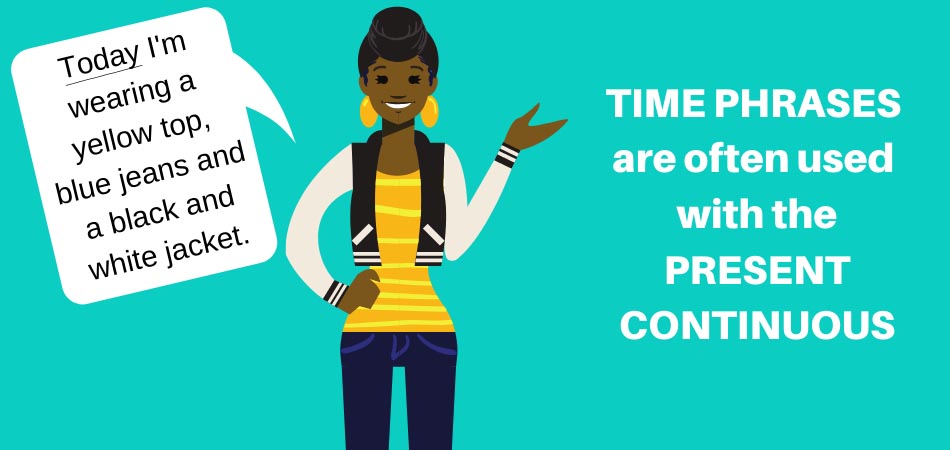
- I’m wearing new clothes today.
- She’s watching lots of TV series at the moment.
- We’re working at the head office this week…
- The trees are changing color this month.
- The company is doing well this year.
“Always” and present continuous
We can also combine the present continuous with “always” for actions that happen very often or too often, usually with a negative meaning when we are making a criticism.
For example:
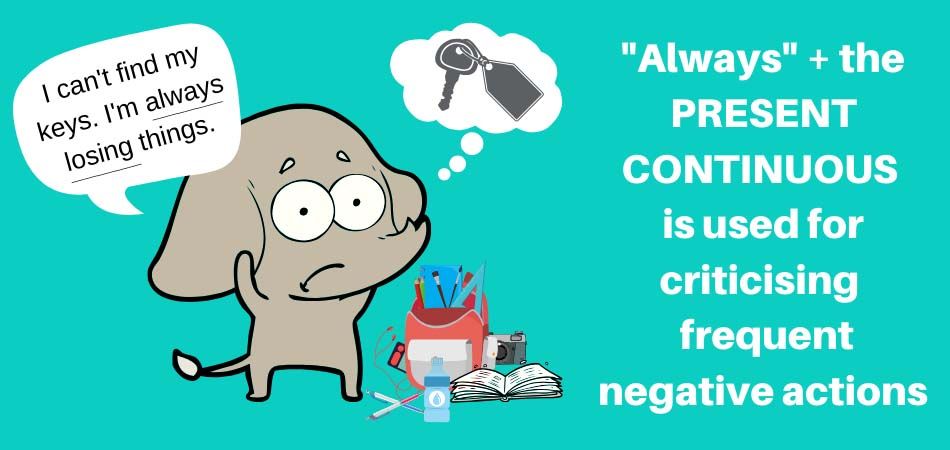
- I can’t find my keys again. I’m always losing things. (happens too often)
- He’s always playing video games. (criticism, plays too much)
- That client is never satisfied, they’re always complaining. (criticism, complains too much)
What’s your English level?
Find out by completing one of our level tests!
What’s your English level?
Find out by completing one of our level tests!
Verbs that don’t usually use the continuous form
In English, there are certain verbs that are normally used in the present simple tense and not the present continuous. These verbs often refer to states or conditions that can either be true or not true, making them difficult to progress. We call these types of verbs state verbs. There are many state verbs in English with certain exceptions to the rules as well.
For example:
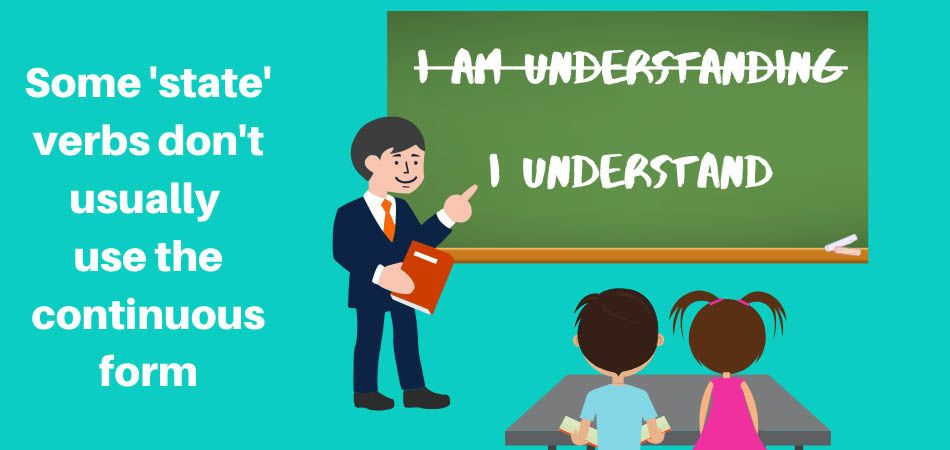
- He understands what you mean
NOT He is understanding…
- I believe in Santa Claus
NOT I am believing…
- Today I want to try that new restaurant
NOT I am wanting….
Present continuous VS Present simple?
In summary, we use the present continuous tense for things happening at or around the time of speaking. The action is unfinished/ still in progress and is usually short-term/ temporary. While the present simple tense is used to describe things in general or things that happen repeatedly. Compare the timelines below for the verb “drive” in both tenses:
Present continuous
[PAST] [NOW] [FUTURE]
<————-[TOM IS DRIVING]————–>
Present simple
[PAST] [NOW] [FUTURE]
<–[ TOM DRIVES ]–>
When we use the present continuous we know Tom is driving right now, he started in the past and hasn’t finished. When we use the present simple we understand that, in general, Tom is able to drive all the time and that he drives regularly.
We hope you found this article useful and that your understanding of how to use the present continuous tense is clearer. As this is a very common tense, we find it in media all around us. Check out the following songs that use the present continuous and let us know in the comments below if you can think of any more!
Billy Idol – Dancing With Myself
For other examples of grammar explained in pictures, check out our GRAMMAR INDEX here.

This article was written by Break Into English’s blog contributor Ilaria Marazzina.







